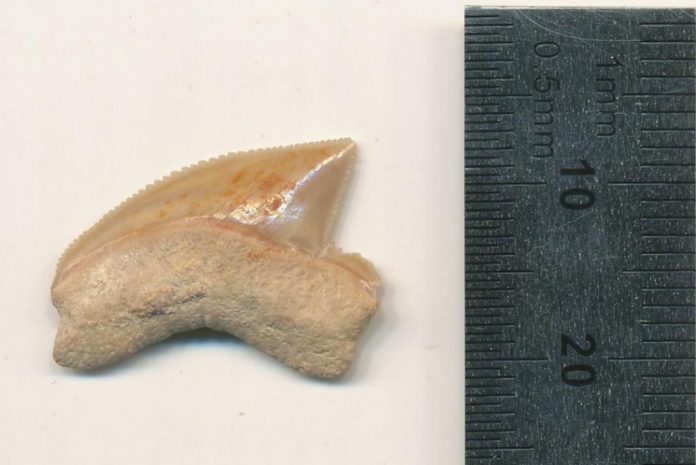
July 4 (UPI) — Scientists have uncovered a mysterious cache of shark teeth in the City of David in Jerusalem. The teeth were discovered at least 50 miles from where similar fossils might be unearthed by paleontologists.
Researchers detailed the discovery of the unexplained fossil collection this weekend at the Goldschmidt Geochemistry Conference.
The teeth were found buried in a material used to fill the basement of an Iron Age house for conversion into a larger dwelling.
“These fossils are not in their original setting, so they have been moved,” lead researcher Thomas Tuetken said in a press release.
“They were probably valuable to someone; we just don’t know why, or why similar items have been found in more than one place in Israel,” said Tuetken, a geoscientist and paleontologist at the University of Mainz.
Scientists found ancient food waste, including fish bones, and pottery fragments near the shark teeth cache.
Researchers also recovered hundreds of bullae, clay seals used on confidential letters and packages. Those materials were determined to be 2,900 years old.
At first, the researchers assumed the shark teeth were contemporary with the other artifacts, but an archaeologist working on the excavation suggested the fossil teeth might belong to a Late Cretaceous shark.
Researchers analyzed the organic matter, elemental composition and crystallinity within the shark teeth and determined they were indeed ancient fossils, not Iron Age food scraps.
“Their strontium isotope composition indicates an age of about 80 million years,” Tuetken said. “This confirmed that all 29 shark teeth found in the City of David were Late Cretaceous fossils — contemporary with dinosaurs.”
“More than that, they were not simply weathered out of the bedrock beneath the site, but were probably transported from afar, possibly from the Negev, at least [49.7 miles] away, where similar fossils are found,” Tuetken said.
Since the discovery, separate archaeological excavations have yielded similarly displaced shark teeth caches in Maresha and Miqne.
“Our working hypothesis is that the teeth were brought together by collectors, but we don’t have anything to confirm that,” Tuetken said.
“There are no wear marks which might show that they were used as tools, and no drill holes to indicate that they may have been jewelry. We know that there is a market for shark’s teeth even today, so it may be that there was an Iron Age trend for collecting such items,” Tuetken said.
Paleontologists determined the shark teeth belonged to Squalicorax, or crow shark, an extinct genus of the mackerel shark family that lived during the Cretaceous period.
A paper describing the discovery was published in the journal Frontiers in Ecology and Evolution.



